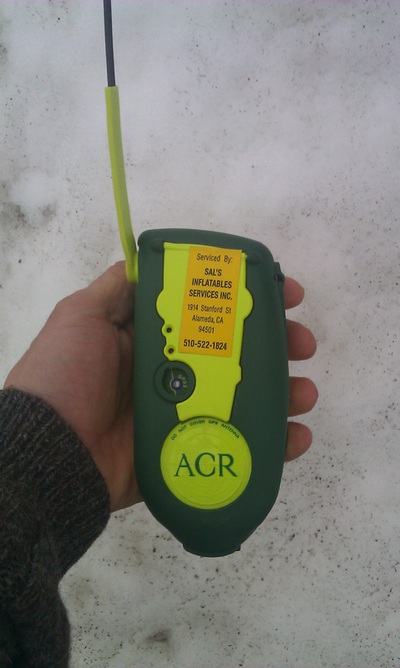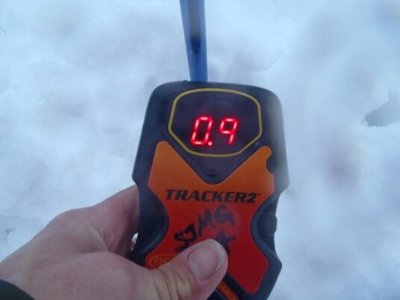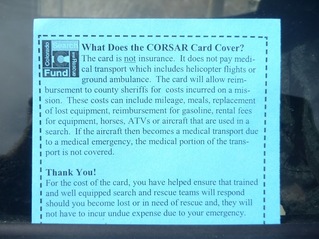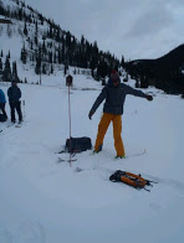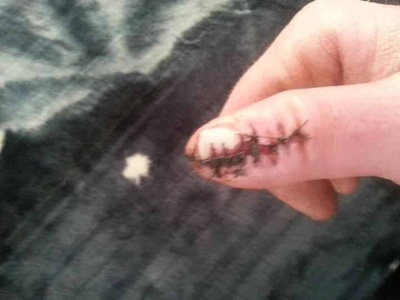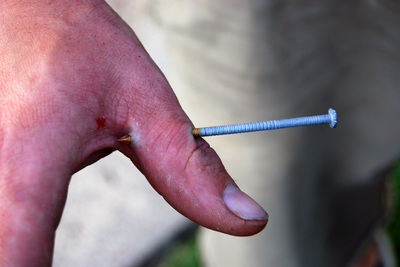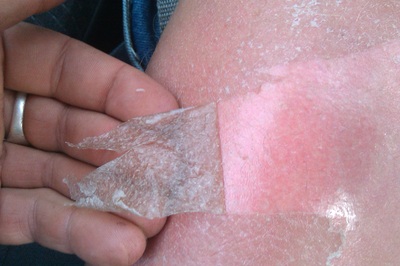Emergency
Hospital Finder
First Aid & CPR
Personal Locating Beacon (PLB) & Transceivers
Going out in area's Solo or Group trip's there's always potential danger. We never expect on getting into an accident- that's why there Accidents-but having devices that can relay our position better our odds on Living another Day.
|
I currently own and never used my ACR Unit.The Acr or PLB otherwise known as the OSB. The ACR (link here) unit is a personal Location Beacon otherwise known as the "Oh Shit Button". This device sends a signal to a satellite that notifies Search & rescue to come and rescue you. Outdoor Gear Lab did a Review Here. Another brand is the Spot Link Here.
These devices can be found at R.e.i, Eastern Mountain Sports, eBay, Amazon. I bought mine used, new they range from about $100-$400. After purchasing they do require that the device be registered to the owner of the unit. I've since changed the battery, Re-registered it into my name, & Satellite Ping Check to confirm the information.. Every two years the units need to be re- registered as you are still the current owner. Ask if there is a yearly fee or service charge like Sat. Phones incur N.o.a.a. These beacons are designed to be carried by an individual person instead of on a boat or aircraft. Unlike Emergency Locator Transmitters or E.L.T.s and some Emergency Position Indicating Radio Beacon or E.P.I.R.B.s, they can only be activated manually and operate exclusively on 406 MHz. And like E.P.I.R.B.s and E.L.T.s all P.L.B.s also have a built-in, low-power homing beacon that transmits on 121.5 MHz. This allows rescue forces to home in on a beacon once the 406 MHz satellite system has gotten them "in the ballpark" (about 2-3 miles). Some newer P.L.B's also allow G.P.S. units to be integrated into the distress signal. This G.P.S.-encoded position dramatically improves the location accuracy down to the 100-meter level…that’s roughly the size of a football field! In the United States, P.L.B.s are now authorized for nationwide use. This authorization was granted by the FCC beginning July 1st, 2003. Prior to July 1st, 2003 only residents of Alaska had been able to use P.L.B.s. The Alaska P.L.B Program was set up to test the capabilities of P.L.B.s and their potential impact on S.A.R. resources. Since March of 1995, the experiment proved very successful and helped save nearly 400 lives while generating only a few false alerts. The success of the Alaska P.L.B. program undoubtedly paved the way for nationwide usage of these devices. If you need to register a 406 MHz P.L.B, you can now register online or you may download a beacon registration form from the registration website and then fax the form to us at: (301) 817-4565. For any other registration questions, please call us at: 1-888-212-SAVE (7283). 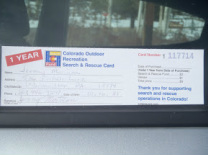
Search & Rescue Card $3.00 or potentially $30,000 without it!
Ask your local Ranger Station. |
Beacon Review link
Tracker2 Info link As the Unit is powered on from the rear side of the device a number will display. This number is the Percentage of Battery life.the unit is in send mode until the device is turned on to "search Mode" by pulling the bottom slide that activates this mode. As you scan the debris field you'll pick up a signal with numbers that indicate the distance between you and the victim. Above the numbers there are indicator lights guiding us either left, right, or straight. As the numbers decrease the signal is getting stronger. The frequency might have you walk a slight convex as the shape of the frequency but that's another subject. It'll guide you to a Low Numbered reading. Your within 3 meter's-you slow your search, find the lowest reading, mark- scan left than right holding the unit straight not turning it in all directions. Mark 1.3 Top, Left 1.3- mark, right- 1.3 mark or about an arm's width apart 1.5 to the back side. This will give you ample room to dig the entire victim out not just a hand. Get out your probe and in a spiral formation start probing the snow to find the victim. Leave the probe in place and start digging when you have a successful strike. Below was an in field simulation of a search and rescue through San Juan Mountain Guides in Ouray Colorado What the card Coves:
The Card is not insurance. It does not pay medical transportation which includes helicopter flights or ground ambulance. The card will allow reimbursement to county sheriffs for costs incurred on a mission. These costs include mileage, meals, replacement of lost equipment, reimbursement for gasoline, rental fee's for equipment, horses, ATV's or aircraft that are used in a search. If the aircraft then becomes a medical transport due to a medical emergency, the medical portion of the transport is not covered. Thank You! For the Cost of the card, you have helped ensure that trained and well equipped search and rescue teams will respond should you become lost or in need of rescue and they will not have to incur expense due to your emergency. |
Back Country First Responder
Course to be taken at a later date...........
|
Broken Bone
Setting a broken bone Making a splint Crutch General Minimum Down Time expect 6 weeks recovery |
Open Wound/ Bleeding
Elevating Stopping the bleeding Cleaning a wound Stitching Care using spider webs to fill wound use chap stick on minor cuts helps stop bleeding. |
Trama
Figuring extent of injuries Securing patient for back country transport Sled methods |
Burns
1st degree 2nd degree 3rd degree Get the burn into Cool water and soak. After soaking apply antibiotic cream. An old remedy is the use of Honey,egg or aloe. |
Some quick information on some plants we hope not to come in contact with.
